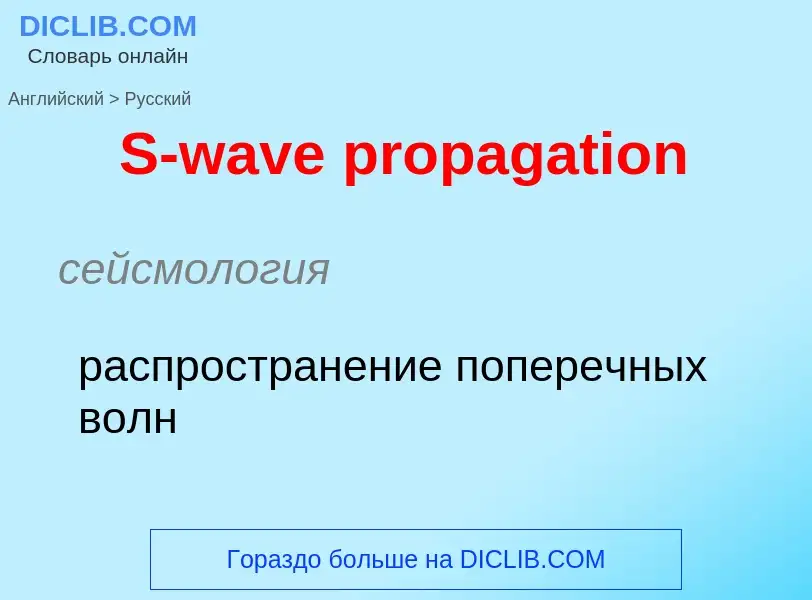Traduzione e analisi delle parole tramite l'intelligenza artificiale ChatGPT
In questa pagina puoi ottenere un'analisi dettagliata di una parola o frase, prodotta utilizzando la migliore tecnologia di intelligenza artificiale fino ad oggi:
- come viene usata la parola
- frequenza di utilizzo
- è usato più spesso nel discorso orale o scritto
- opzioni di traduzione delle parole
- esempi di utilizzo (varie frasi con traduzione)
- etimologia
S-wave propagation - traduzione in russo
сейсмология
распространение поперечных волн
строительное дело
сдвиговая волна, волна сдвига
общая лексика
побочная волна
нефтегазовая промышленность
вторичная волна
Definizione
Wikipedia
Radio propagation is the behavior of radio waves as they travel, or are propagated, from one point to another in vacuum, or into various parts of the atmosphere.: 26‑1 As a form of electromagnetic radiation, like light waves, radio waves are affected by the phenomena of reflection, refraction, diffraction, absorption, polarization, and scattering. Understanding the effects of varying conditions on radio propagation has many practical applications, from choosing frequencies for amateur radio communications, international shortwave broadcasters, to designing reliable mobile telephone systems, to radio navigation, to operation of radar systems.
Several different types of propagation are used in practical radio transmission systems. Line-of-sight propagation means radio waves which travel in a straight line from the transmitting antenna to the receiving antenna. Line of sight transmission is used for medium-distance radio transmission, such as cell phones, cordless phones, walkie-talkies, wireless networks, FM radio, television broadcasting, radar, and satellite communication (such as satellite television). Line-of-sight transmission on the surface of the Earth is limited to the distance to the visual horizon, which depends on the height of transmitting and receiving antennas. It is the only propagation method possible at microwave frequencies and above.
At lower frequencies in the MF, LF, and VLF bands, diffraction allows radio waves to bend over hills and other obstacles, and travel beyond the horizon, following the contour of the Earth. These are called surface waves or ground wave propagation. AM broadcast and amateur radio stations use ground waves to cover their listening areas. As the frequency gets lower, the attenuation with distance decreases, so very low frequency (VLF) to extremely low frequency (ELF) ground waves can be used to communicate worldwide. VLF to ELF waves can penetrate significant distances through water and earth, and these frequencies are used for mine communication and military communication with submerged submarines.
At medium wave and shortwave frequencies (MF and HF bands) radio waves can refract from the ionosphere. This means that medium and short radio waves transmitted at an angle into the sky can be refracted back to Earth at great distances beyond the horizon – even transcontinental distances. This is called skywave propagation. It is used by amateur radio operators to communicate with operators in distant countries, and by shortwave broadcast stations to transmit internationally.
In addition, there are several less common radio propagation mechanisms, such as tropospheric scattering (troposcatter), tropospheric ducting (ducting) at VHF frequencies and near vertical incidence skywave (NVIS) which are used when HF communications are desired within a few hundred miles.


